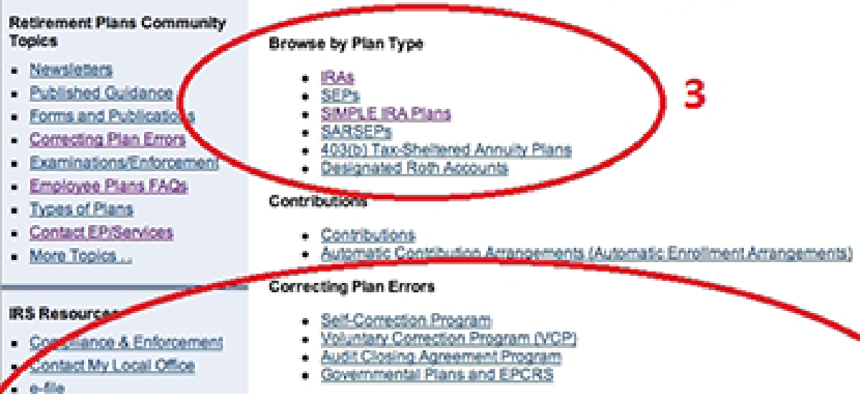How to fix bad agency websites

First Fridays, a GSA-run usability testing program, helps federal agencies improve their online presence.

IRS.gov as marked up by GSA's web usability testing program. The analysis found that the site, as it existed in January 2012, bombarded users with too much information and an overuse of jargon. IRS redesigned the site in response to the critique.
For an end user, a poorly designed federal website can waste time and test patience. For the agency behind that site, usability problems can quickly drain dollars from budgets.
The General Services Administration’s First Fridays usability testing program detailed the most common dot-gov website fails of 2012 in a blog post penned by program manager Jonathan Rubin. Among them: Poor navigation labels, lack of contact information, unclear purpose and hard-to-find important content.
Costs for such common mistakes can compound quickly in any space.
“If a design is not working, there are real costs in adjustments to a design and implementing it,” said Eric Gundersen, CEO of MapBox and co-founder of Development Seed, a Washington, D.C.-based firm that has worked with a number of federal agencies. “Designing smart at first is important, but you’ve got to watch how people actually use your site.”
Site redesigns can cost hundreds of thousands of dollars, but continuing to maintain inefficient websites that aren’t giving customers what they want bring significant costs of their own.
Rubin cited www.army.mil -- one of the 26 federal websites, mobile sites and intranets First Fridays tested in 2012 – as a prime example. The site did not feature the most-often requested information – benefits and salary information – at the top of its page, leading to swamped call centers and an overflow of e-mail requests for help.
GSA’s team recommended a few quick fixes – relocating important information, for example, and adding “frequently asked questions” links throughout the Army’s websites – and “almost immediately they started seeing a decrease in the amount of phone calls they were getting,” Rubin said. The staff time saved, he argued, translates directly into cost savings for the government.
“It was cheaper for them to address the problem with their websites than anything else,” Rubin told FCW.
Formed two years ago, the First Fridays usability testing program provides free product tests for government websites. It has studied the reactions of more than 450 unbiased users as they navigate the sites, and to date has saved the government $1.4 million in educational and usability services, Rubin said. The larger goal is to teach agencies how to do their own testing, he added, and said he expects those efforts to lead to significant further savings down the road.
“You wouldn’t roll out a car without testing it, and you’d want to make sure that all its features work,” Rubin said. “You don’t want to have to go back to the drawing board and fix things. We’ve seen you can often get a big impact from small changes in the way you do things.”
For a glimpse of federal websites before and after implementing testing recommendations from First Fridays, click here.






